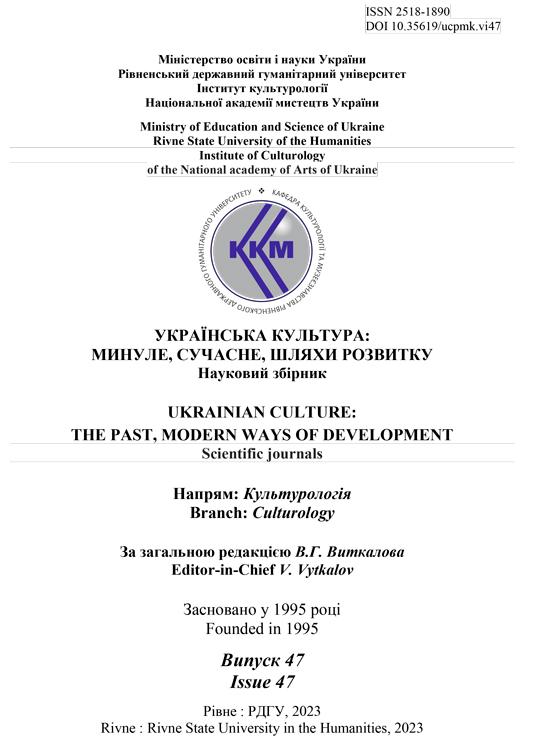CULTURAL AND ARTISTIC ISSUES OF AUTEUR CINEMA IN THE CONTEXT OF NATIONAL CULTURE: GENRE DIVERSITY OF KIRA MURATOVA'S FILMMAKING (BASED ON THE EXAMPLE OF THE ANTI-FAIRY TALE «MELODY FOR A STREET ORGAN»)
Abstract
This article analyzes the category of «genre» in culture, identifying it as a not entirely fixed and determined concept. It acknowledges that genre distribution has its specificity depending on the specific sphere of artistic activity, and any genre can borrow specific features from other genres. The conclusion is drawn that the genre category is historically fluid, and genre characteristics constantly evolve. The article specifically examines the specifics of cinematic genres, noting that the process of genre formation in cinema is dynamic, with blurred boundaries between film genres and a potentially endless variety of genres. The study delves into the genre specifics of auteur cinema, highlighting features such as freedom of stylistic expression, the creative independence of the director-author, the absence of commercial intent, individual self-expression, depth of explored phenomena, and the freedom to choose a
specific form and genre model embodying the author's concept. A separate section of the scholarly work is dedicated to exploring the genre uniqueness of Kira Muratova's films.
The evolution of her genre experiments is analyzed in the context of the formation of national auteur cinema. It is noted that the genre diversity of Muratova's works is quite broad, ranging from melodrama in her early independent feature works to drama, tragic farce, absurdity, tragicomedy, and parable. The analysis of Muratova's films leads to the
conclusion that her creativity is characterized by a complex expression of the connection with genre canons, genre lending forming the basis of her artistic nature. Continuous genre experiments throughout her cinematographic career have defined her unique authorial style and «director's signature». Using the example of the film «Melody for a Street Organ», the specificity of the anti-fairy tale genre in Muratova's creative and genre experiments is explored for the first time. Specific features of the genre and their cinematic embodiment are identified, including psychological depth, parody, and allusions, imperfection of characters, unconventional endings, moral ambiguity, desymbolization of cultural images, complex and ambiguous moral themes, grotesqueness, and deformity of characters.


